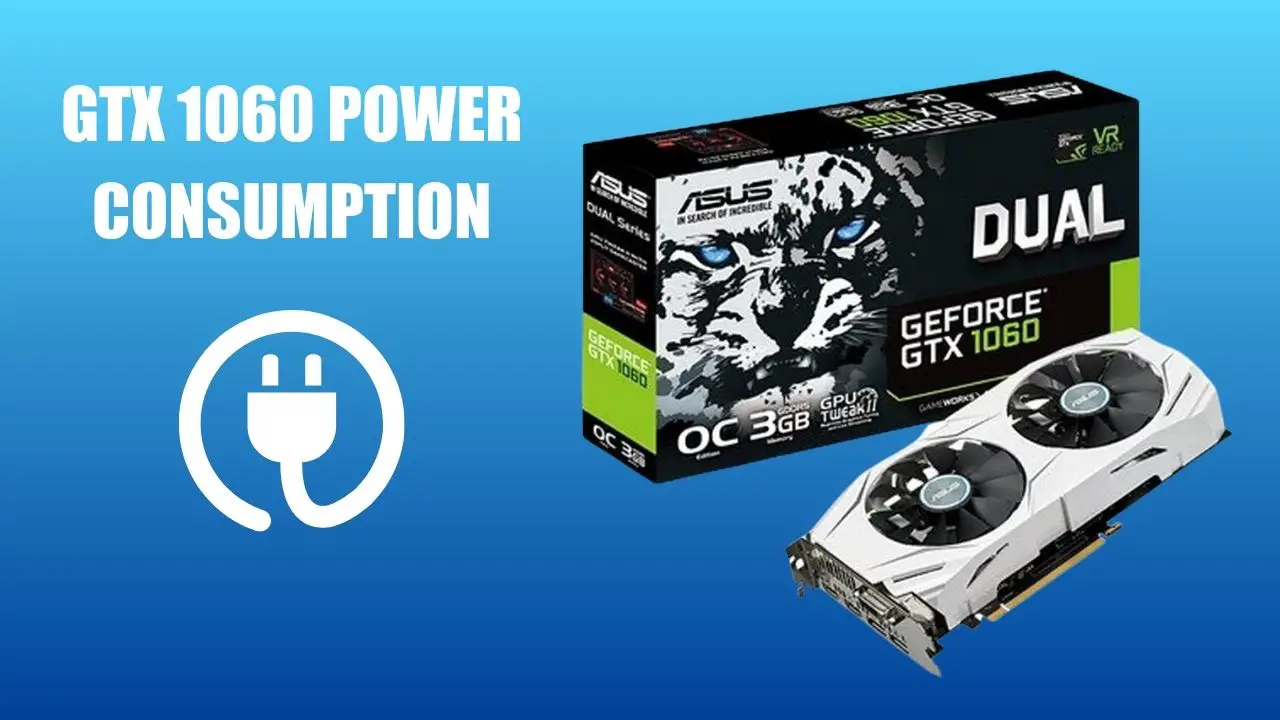The GTX 1060 needs 120 watts of power at maximum load and needs a 6-pin supplementary power connector and a minimum system power supply of 400 watts.
During gaming, it consumes an average of 114 watts, although this may differ based on the game and settings.
In idle mode, it uses only 8 watts of power.
How Many Watts Does A GTX 1060 Use Per Hour?
To change watts to kilowatt hours, multiply the power in watts by the time in hours, then divide by 1000. Consider a GTX 1060 using 120 watts of power running for one hour; compute the energy consumption in kilowatt hours like this:
(120 W x 1 hr) / 1000 = 0.12 kWh
Thus, the GTX 1060 consumes 0.12 kilowatt hours of energy per hour. Modify the formula for different time lengths. For a 30-minute run, divide the time by 2:
(120 W x 0.5 hr) / 1000 = 0.06 kWh
From previous computations and with the mean electricity rate at $0.14 per kilowatt-hour, weekly gaming spans 8.5 hours.
The graphics card consumes $0.12 in power weekly, totaling $6.24 each year.
However, for evaluating your computer’s complete power consumption, note that the graphics card constitutes around 40-50% of the entire power usage.
Consequently, a standard configuration with a GTX 1060 could cost close to $12.50 annually to run.
What Power Supply Do I Need For A GTX 1060?
To power a GTX 1060, the necessary power supply relies on other system components, and if overclocking is intended.
As per Nvidia, a minimum of 400 watts is required. However, higher wattage PSUs such as 450 or 500 watts may be needed to accommodate peak consumption and future upgrades.
A general guideline is to opt for a PSU that can offer at least 50% more power than your estimated usage.
For instance, if your system uses 300 watts at maximum capacity, selecting a PSU that can supply at least 450 watts would guarantee peak performance and dependability.
What Power Cable Do I Need for GTX 1060?
The required GTX 1060 power cable is a 6-pin PCI Express connector, that connects the power supply to the graphics card.
This cable delivers extra power to the GPU, beyond what the PCI Express slot provides.
The 6-pin connector features three wire pairs, each with 12 volts and 3 amps of current, totaling 75 watts of power.
Confirm that your power supply has a 6-pin PCI Express connector before installing the GTX 1060.
If your power supply lacks a 6-pin connector, an adapter converting a Molex or SATA power connector to a 6-pin connector may be necessary.
However, avoid this approach due to potential instability or damage to your system. Instead, consider upgrading your power supply to one with the correct connectors for the graphics card.
Do different manufacturers’ versions of the GTX 1060 consume varying amounts of power?
Yes, different manufacturers’ versions of the GTX 1060 may consume varying amounts of power, depending on their clock speeds, cooling solutions, and power delivery designs.
Based on certain critiques and performance tests, Nvidia’s GTX 1060 reference model consumes approximately 120 watts of power when operating at maximum capacity.
However, some custom models from other manufacturers may use more or less power than that.
For example, The EVGA GTX 1060 SC Gaming draws 116 watts of power when operating at full capacity, whereas the MSI GTX 1060 Gaming X utilizes roughly 140 watts of power under similar conditions.
What is the impact of overclocking on the power usage of the GTX 1060?
The influence of overclocking on GTX 1060 power usage hinges on the extent of clock speed and voltage boosts for the GPU and memory.
Overclocking typically raises the graphics card’s power consumption since more energy is needed for quicker, steadier performance.
Nevertheless, the precise power increase fluctuates based on the model, cooling method, and power limit of your GTX 1060.
Some sources suggest that overclocking the GTX 1060 may increase its power consumption by 10 to 50 watts, contingent on the settings and workload.
For instance, one analysis discovered that overclocking Nvidia’s reference GTX 1060 raised its power consumption from 120 watts to 140 watts under full load.
Another assessment reported that overclocking the MSI GTX 1060 Gaming X boosted its power consumption from 140 watts to 170 watts under full load.
How much does the temperature of the GPU affect the power consumption of the GTX 1060?
The GPU temperature impacts the GTX 1060’s power consumption through both direct and indirect means.
Increased temperatures raise electrical component resistance, necessitating greater power to maintain current and voltage levels.
In addition, higher temperatures activate the GPU’s thermal management system, which can lower clock speeds and voltages for the GPU and memory to reduce heat output.
This may lower the graphics card’s power consumption but at the expense of performance.







